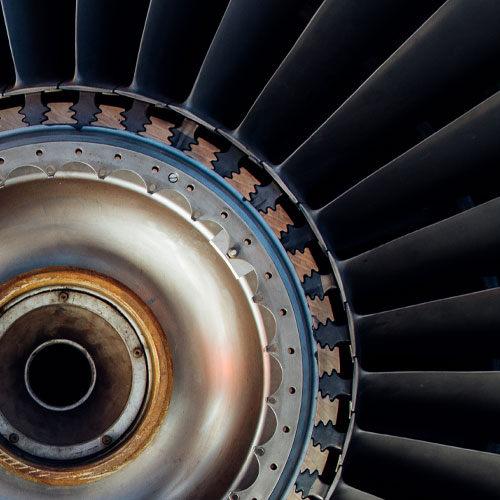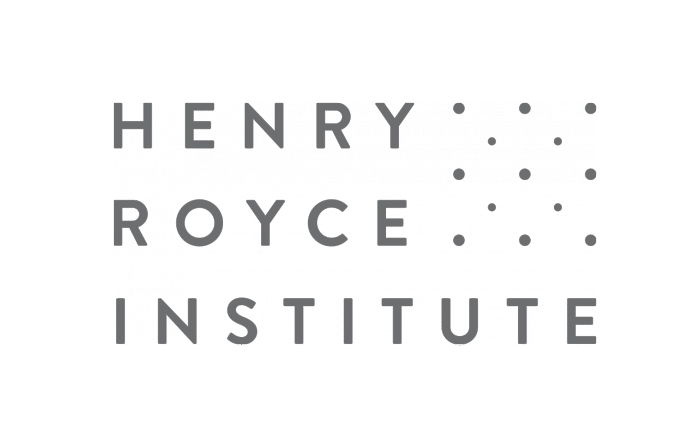This website uses cookies so that we can provide you with the best user experience possible. Cookie information is stored in your browser and performs functions such as recognising you when you return to our website and helping our team to understand which sections of the website you find most interesting and useful.

Ion Beam Irradiation and Characterisation – best practice
Royce Training
Course Overview
This page provides information and guidance on the procedures and techniques for the planning, preparation, and running of ion irradiation and characterisation experiments. The content goes beyond standard use cases familiar to most researchers and introduces examples and processes that can help unlock the full potential of these approaches. Ultimately, the course provides a deeper knowledge of best practice in this research area and provides useful guides on how to fully use the techniques available through Royce partners and the wider UK nuclear research community.
The slides and presentations presented here were delivered on the Royce Training “Ion Beam Irradiation and Characterisation – best practice” course 2-3 March 2023.
Technology platforms
Royce has five interconnected Technology Platforms for nuclear characterisation.
Technology Platforms sit within our Research Framework, and are groupings of cutting-edge facilities and expertise.
Each Platform has a Technology Platform Lead responsible for developing and enhancing the facilities and supporting related research activities which utilise Royce equipment.
These core capabilities have been established through significant EPSRC investment to enable innovative advanced materials research. They represent an integrated ecosystem for making, testing and characterising advanced materials and accelerating their transition through the early stages of discovery.
Importantly, Royce Technology Platforms see us combining capabilities across Partners, ensuring UK-wide materials science expertise and capability is visible and accessible to the materials community.
Other UK platforms for nuclear characterisation
Microscopes and Ion Accelerators for Materials Investigation (MIAMI)
MIAMI brings together the fields of innovative particle accelerator development and the use of particle accelerators for probing the properties of materials using the world-leading facilities at the University of Huddersfield.
The MIAMI facilities in Huddersfield are part of the UK National Ion Beam Centre, with additional infrastructure located at the Dalton Cumbria Facility and University of Surrey (Surrey Ion Beam Centre).
National Nuclear User Facility
NNUF offers experimental facilities for research and development in nuclear science and technology.
Recordings
You can access recordings from each of the sessions below. They have also been grouped together into the Ion beam irradiation and characterisation – best practice playlist on the Royce YouTube Channel.
Characterisation of radiation damage and access to the MRF at UKAEA
Ed Eardley introduces the facilities for characterising radiation damage at the MRF
FISPACT transmutation calculations for high energy proton/alpha irradiations
Mark Gilbert guides us through FISPACT calculations.
Best practice for SIRM radiation damage level calculations
Rob Harrison guides us through how to calculate radiation damage levels using the SIRM programme.
Ion irradiation – planning, facilities, execution, best practice
Samir Shubeita provides an overview of ion beam facilities at DCF and experimental best practice and planning.
Dislocation imaging and characterisation in TEM
Jack Haley provides guidance on best practice for nuclear materials TEM.
TEM with In-Situ Ion Irradiation
Inam Mir introduces the MIAMI facility at the University of Huddersfield and shares TEM best practice.
Chemical mapping of irradiation-induced defects
Simon Dumbill outlines approaches for chemical mapping in radiation-induced defects.
Software
FISPACT-II is an enhanced multiphysics, inventory and source-term code system providing a wide variety of advanced, predictive, spectral and temporal simulation methods employing the most up-to-date and complete nuclear data forms for both neutron and charged-particle interactions.
https://www.oecd-nea.org/tools/abstract/detail/nea-1890/
Image-J + Radial Profile Extended
ImageJ is a public domain Java image processing program inspired by NIH Image for the Macintosh. It runs, either as an online applet or as a downloadable application, on any computer with a Java 1.4 or later virtual machine. Downloadable distributions are available for Windows, Mac OS, Mac OS X and Linux.
https://imagej.net/ij/index.html
https://imagej.nih.gov/ij/plugins/radial-profile-ext.html
https://henke.lbl.gov/optical_constants/atten2.html
Data Libraries
References
- Kaschel et al. (2020) Mechanism of stress relaxation and phase transformation in additively manufactured Ti-6Al-4V via in situ high temperature XRD and TEM analyses, Acta Materialia.
- Sublet et al. (2014) EASY-II Renaissance: n, p, d, α, γ-induced Inventory Code System, Nuclear Data Sheets.
- Sublet et al. (2017) FISPACT-II: An Advanced Simulation System for Activation, Transmutation and Material Modelling, Nuclear Data Sheets.
- Was G.S. (2017) The Displacement of Atoms. In: Fundamentals of Radiation Materials Science. Springer, New York, NY.
- Stoller et al. (2013) On the use of SRIM for computing radiation damage exposure, Nuclear Instruments and Methods in Physics Research Section B: Beam Interactions with Materials and Atoms.
- Argwal et al. (2021) On the use of SRIM for calculating vacancy production: Quick calculation and full-cascade options, Nuclear Instruments and Methods in Physics Research Section B: Beam Interactions with Materials and Atoms.
- Nordlund et al. (2018) Improving atomic displacement and replacement calculations with physically realistic damage models, Nature Communications.
- Jenkins et al. (2000) Characterisation of Radiation Damage by Transmission Electron Microscopy, CRC Press.
- Yao et al. (2012) TEM characterization of dislocation loops in irradiated bcc Fe-based steels, Journal of Nuclear Materials.
- Field et al. (2017) Dislocation loop formation in model FeCrAl alloys after neutron irradiation below 1 dpa, Journal of Nuclear Materials.
- Gammer et al. (2015) Diffraction contrast imaging using virtual apertures, Ultramicroscopy.
- Lim et al. (2020) Application of Modern Scanning/Transmission Electron Microscope with Pixelated STEM Detector for Radiation Damage Study, Microscopy and Microanalysis.
- Britton et al. (2018) Understanding deformation with high angular resolution electron backscatter diffraction (HR-EBSD), IOP Conference Series: Materials Science and Engineering.
- Mir et al. (2018) Xenon solubility and formation of supercritical xenon precipitates in glasses under non-equilibrium conditions, Nature Scientific Reports.
- Camara et al. (2021) Nanostructuring Germanium Nanowires by In Situ TEM Ion Irradiation, Particle & Particle Systems Characterization.
- Sachan et al. (2019) Energetic Ion Irradiation-Induced Disordered Nanochannels for Fast Ion Conduction, Advancement in Solid Oxide Fuel Cell Research.
- Lang et al. (2015) Advances in understanding of swift heavy-ion tracks in complex ceramics, Current Opinion in Solid State and Materials Science.
- Afra et al. (2013) SAXS investigations of the morphology of swift heavy ion tracks in α-quartz, Journal of Physics: Condensed Matter.
- Mir et al. (2021) An in-situ TEM study into the role of disorder, temperature and ballistic collisions on the accumulation of helium bubbles and voids in glass-ceramic composites, Journal of Nuclear Materials.
- Garcia et al. (2011) Amorphization kinetics under swift heavy ion irradiation: A cumulative overlapping-track approach, Nuclear Instruments and Methods in Physics Research.
- Vatter et al. (1989) Measurement of grain-boundary segregation by STEM-EDX analysis, Ultramicrscopy.
- https://www.osti.gov/pages/servlets/purl/1185721
- Barcellini et al. (2019), Local chemical instabilities in 20Cr–25Ni Nb-stabilised austenitic stainless steel induced by proton irradiation, Journal of Nuclear Materials.
- Spent Fuel Performance Assessment and Research, IAEA-TECDOC-1975, ISBN 978-92-0-128121-0.
- Li et al. (2023) An examination of the precipitation behavior of proton irradiated dual phase 308L weldment filler materials, Journal of Nuclear Materials.
- David et al. (20214) In situ controlled modification of the helium density in single helium-filled nanobubbles, Journal of Applied Physics.
- Harte et al. (2017) Nano-scale chemical evolution in a proton-and neutron-irradiated Zr alloy, Journal of Nuclear Materials.
- Cummings et al. (2022) Xenon bubbles formed by ion implantation in zirconium alloy films, Journal of Nuclear Materials.
- Annand et al. (2015) Utilising DualEELS to probe the nanoscale mechanisms of the corrosion of Zircaloy-4 in 350 C pressurised water, Journal of Nuclear Materials.
- Lozano-Perez et al (2009) Achieving sub-nanometre particle mapping with energy-filtered TEM, Ultramicroscopy.
- Newbury (2009) Mistakes encountered during automatic peak identification of minor and trace constituents in electron-excited energy dispersive X-ray microanalysis, Wiley.
- Renault et al (2012) TEM and EFTEM characterization of solution annealed 304L stainless steel irradiated in PHENIX, up to 36 dpa and at 390 °C, Journal of Nuclear Materials.
- Alex Carruthers PhD thesis, University of Manchester, 2018
- Burke et al. (2006) Quantitative characterization of nanoprecipitates in irradiated low-alloy steels: advances in the application of FEG-STEM quantitative microanalysis to real materials, Journal of Material Science.
- Titchmarsh et al. (1996) On the Measurement of Radiation-Induced Segregation at Point Defect Sinks, Journal of Nuclear Materials.
- Laboratory X-ray Sources, University College London.
- Generation of X-rays, University College London.
- Superposition, Salford Acoustics.
- Reflection Geometry, University College London.
- Gandy et al. (2019) High temperature and ion implantation induced phase transformations in novel reduced activation Si-Fe- V-Cr (-Mo) high entropy alloys, Frontiers in Materials.
- Lawson et al. (2019) Resistance to amorphisation in Ca1-xLa2x/3TiO3 perovskites – a bulk ion- irradiation study, Acta Materialia.
- Ribárik et al (2020) The Convolutional Multiple Whole Profile (CMWP) Fitting Method, a Global Optimization Procedure for Microstructure Determination, Crystals.
Make an Enquiry
Royce regularly delivers technical skills workshops and courses to support Royce capabilities, share best practice and develop new understandings of cutting edge technologies across the materials science community.
Our training supports researchers and technicians working across academia, SMEs and industry in order to drive collaboration, networking and innovation in advanced materials.
To learn more about Training and Skills courses delivered through Royce please contact training@royce.ac.uk






